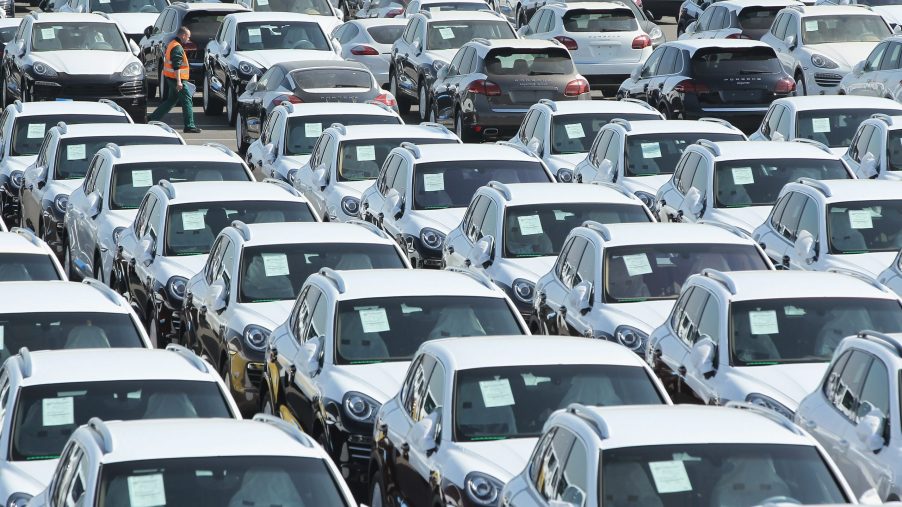
How Many People Still Want to Buy a Car During the Pandemic?
Much of the country is pushing to reopen businesses in a quest to return to normal. But the pandemic may be far from over, with evidence in hot spot states like Florida, Texas, and California right now. So, how does the car-buying landscape look these days? Of course, back in March and April, many consumers were sheltering in place, facing job furloughs, and hanging on to their leased vehicles beyond the turn-in dates.
As we jump into August, are people returning to their dealerships to buy cars, or are they still hesitant? One study suggests people are making a comeback, but maybe not for the reasons you’d suspect.
Automakers are lukewarm with incentives these days
Carmakers responded quickly to the pandemic, and many offered incredible new vehicle incentives to help buyers, according to Market Watch. It was less about slashing new car prices, though. Most of the incentives were based around offering deferred payments, lower interest rates, and flexibility with deals.
Consumers were facing uncertain job markets, and the manufacturers recognized incentives as the only solution to consumer confidence. But in recent weeks, and with a surge in car buying this summer, new vehicle inventory has plummeted.
Remember, those automakers were shut down for a while, meaning there is a shortage of new available 2020 models right now. Incentives for buying those aren’t as red-hot as before.
Dealerships are getting creative
At the dealership level, things have been a little hectic. As regions reopened for business, customers began returning to the market, either online or in visiting the showroom. The lease returns, once put on hold, were flooding back.
People who put off trading in their cars were now coming in to take advantage of the automaker incentives. Dealers had to get creative, though. With a shortage of new inventory, sales managers have been pivoting to sell certified pre-owned and slightly used models instead, according to The Drive.
The June data shows increased car buying traffic
CarGurus has been collecting car buying data since early April. And their analysis shows there has been a surge in consumers returning to their dealerships for new rides.
In April, for example, they show 79% of consumers who were ready to browse, were going to wait. Based on June stats, 69% of shoppers indicated they would delay their purchases. But those serious buyers, or consumers who had already decided they would buy in 2020 but before the pandemic, only 2% are still holding out.
Why consumers are buying cars now
Consumer transportation needs have changed in light of the pandemic. Of course, cars are essential for commuting and basic transportation needs, so people still rely on their vehicles. But it’s not the automaker incentives that are drawing shoppers back to the dealership.
Some consumers see there are fewer virus exposure risks when traveling by car. Any traveling they do by public transit, ridesharing, or flying means being in close proximity to others. The CarGurus study suggests 39% of those surveyed were using rideshares before COVID-19.
Another 44% said they used to use public transportation, including subways, buses, or shuttles. Both groups expect to significantly shift back to driving their own cars in the months to come. With a huge public segment of people getting back behind the wheel, there will continue to be a surge in car-buying.
The country may not be out of the woods yet in coping and living with the pandemic. And consumer confidence and retail spending are expected to continue shifting accordingly. When it comes to buying a car, the landscape for shoppers looks incredibly different today than earlier in the year. More people are buying now, anticipating a need to drive themselves.


